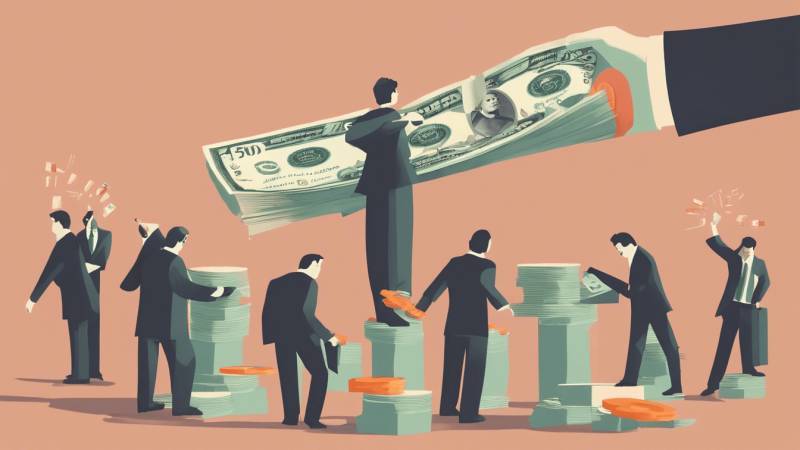
A broken taxation system Taxing income progressively implies taxing efficiency. Taxing income regressively implies taxing poverty, therefore, taxing income creates a double dilemma; instead, a wealth tax, as is being tabled for the world’s dollar billionaires to bridge the growing wealth inequality, needs to have a blanket imposition to create a fair, equitable, and sustainable fiscal policy.
As is the case for corporations, creating ‘slabs’ by imposing a super tax on certain wealthy ones as an equaliser, creates anomalies within the taxation system, as certain businesses like IT, and IT-enabled services are asset-light, however, have managed to sustain a bottom line at par with the well-established asset-intensive large scales manufacturing industries such as cement, steel, and pharmaceuticals. This performance is owed to the investment that workers have made in themselves by acquiring expensive education and tiring training programs. However, a super tax that bifurcates companies based on a minimum income threshold has a major loophole, that is, it disregards the element of efficiency and does not consider the efficiency-linked financial ratios such as the asset turnover ratio.
While taxing income, and consumer spending, the incidence of taxation falls on transactions, that is, the flow of the economy, and not the unproductive stock in the economy (inventories, receivables, circular debts, empty barren land, cash and cash equivalents, securities), creating hinderances in the flow of the economy, thereby, disrupting potential transactions, and slowing the flow of money, and gradually dragging the economy down, towards imminent stagnation. This is where we witness a subtle clash between two disciplines, accounting, and economics, where the latter is aimed at satisfying wants, while the former is obsessed with judging the ability of an entity to function as a going concern. While modern economics suggests an eventual eclipse towards zero (economic) profit as an industry matures, accounting pleads to keep debt levels in check.
The incidence of indirect taxation, for instance, the recent hike in Federal Excise Duty on cement from PKR 2 per kg to PKR 4 per kg, resulted in a parallel increase in the prices where the cost has been conveniently passed onto the end consumer
The other three accounting heads, assets, liabilities, and equity, that is, the balance sheet side of the equation remains insulated from the incidence of taxation, which is the root cause of the problem, and the system cultivates and breeds inefficiency, encourages mindless wealth accumulation, widens the wedge between the wealthy and the marginalised, and penalises work.
The incidence of indirect taxation, for instance, the recent hike in Federal Excise Duty on cement from PKR 2 per kg to PKR 4 per kg, resulted in a parallel increase in the prices where the cost has been conveniently passed onto the end consumer. This will have implications for the economy as we are seeing the demand for cement tapering off, as domestic offtakes have declined 20% year-on-year in Q1 FY25 according to brokerage house Topline Securities Limited. This will have a ripple effect on the construction allied industries, which is a labor-intensive segment of the economy, the likes of which are necessary for a country like Pakistan having a youth bulge, that is getting disillusioned owing to the lack of opportunities offered by this nation inhabiting 240 million. The same is the case with POL products, where the cumulative impact of sales tax, duties, and petroleum development levy, aggregates to at least one-third of the retail price of these products. The difference is yet again, borne by the end consumer. The problem with such indirect taxes is that an equal burden is passed on to all segments of society, disregarding the gap between the spending power of the wealthy and the destitute, and the disproportionate impact of these indirect taxes on consumers leads us to the conclusion that they are regressive in nature.
However, taxing wealth is not a piece of cake. So… how do we go about it? In the first stage, this wealth tax does not need to be imposed on individuals, rather, we can pluck the low-hanging fruit by targeting the balance sheets of corporations, by imposing a flat 2.5% tax on non-productive assets of the corporation, that is, all items on the assets side of the balance sheet, barring property, plant, and equipment. To keep corporations from agitating, we may simultaneously abolish the tax on corporate profits. By this simple accounting paradigm shift, we can turn our 48.339 trillion worth of domestic debt, as of August 2024, and our PKR 2,897 billion worth of circular debt, where the latter includes PKR 814 billion in interest, as per the energy ministry, into a revenue source, as these will become taxable at the rate of 2.5%, which exceeds or in worst case equals the banking spreads charged over and above the benchmark rates conventionally in the auctions of Government securities. But… Who will dare to bell the cat!

